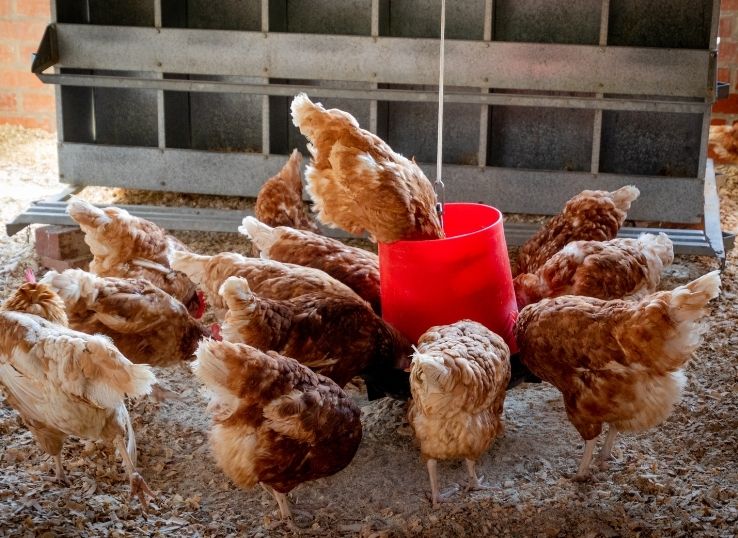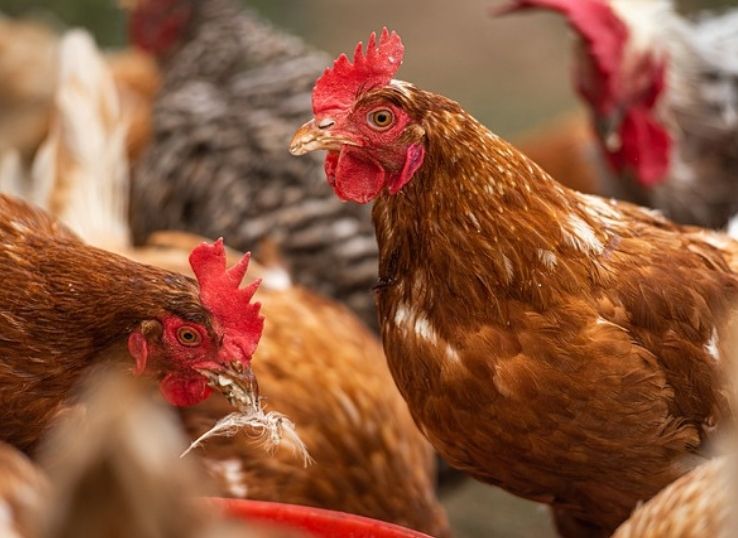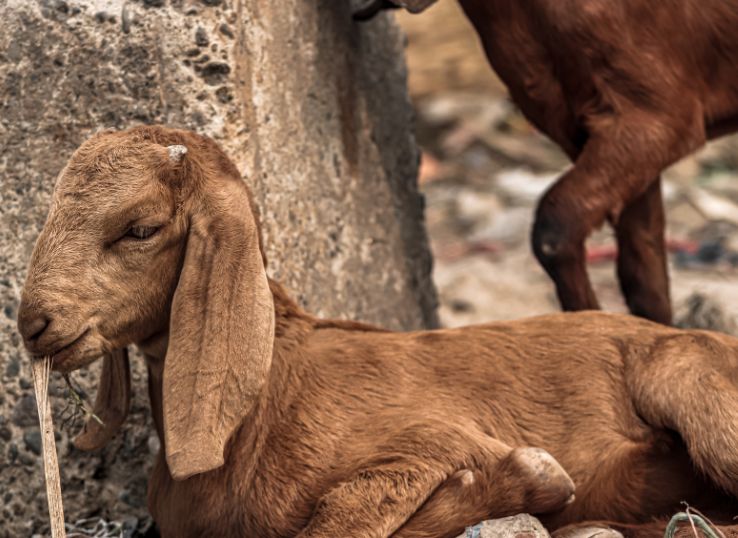Sahiwal Cattle ( Milk, Identification, Conservation)
Last Updated on August 11, 2022 by Dr. Ali Shahid

Pakistan has 15 zebu cattle breeds. Out of these Sahiwal cows, Red Sindhi, and Cholistani are milch breeds. Sahiwal and Red Sindhi are internationally accepted tropical dairy breeds.
Among Bos Indicus breeds Sahiwal cattle is the highest milk producer making it a perfect dairy cow for the farmers. Sahiwal cattle originated in the Sahiwal and Okara district of Punjab, Pakistan some 100 years ago.
There is speculation that Sahiwal cattle has developed from the Cholistani cattle breed. The first farm of Sahiwal cattle was developed in 1914 by Britishers in Tehsil Depalpur District Okara and this task was assigned to Sadar Jahangir Khan Wattoo.
It was raised in large herds by nomads before the introduction of the irrigation system in 1914-15 (report 2009-10). The bulls were used for drafting. In the previous century, Sahiwal was the main cattle breed for the farmers for milk production.
There is always a huge demand and high price for animals of this breed. It is now predominately present in the Punjab districts of Okara, Sahiwal, Pakpattan, Multan, Khanewal, Jhang, and Faisalabad (Anonymous 2006).
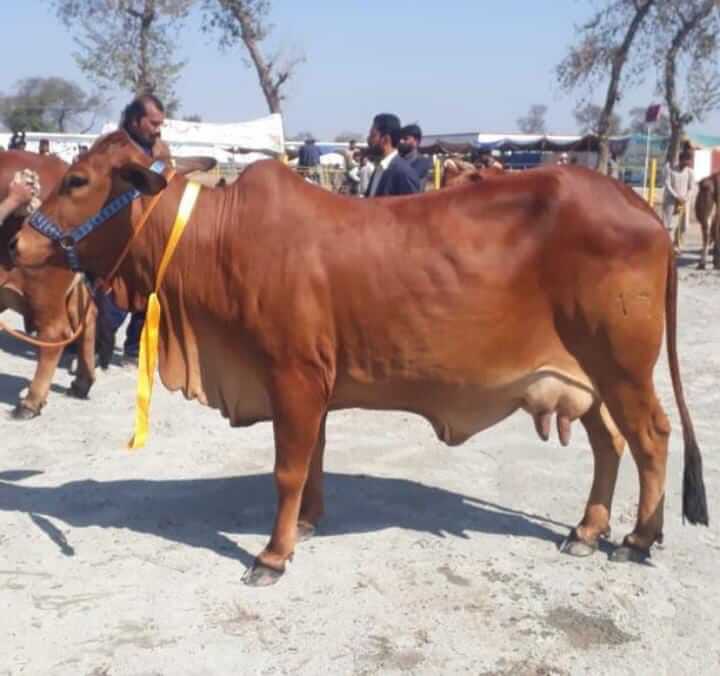
The breed is best known for its heat resistance and high milk production among zebu cows. The parasite and tick resistance ability make it resistant to many blood-borne diseases like theleria, babesia, and anaplasma.
After Brahman cattle, the Sahiwal cow is considered the best breed in terms of adaptability in tropical territories. Due to these noticeable traits, Sahiwal cattle is a very popular dairy breed not only among the farmers of Pakistan and India.
Furthermore, this breed has been exported to many other countries including Kenya, Australia, Brazil, Bangladesh, China, New Zealand, and UAE.
Milk Benefits of Sahiwal Cattle
The average body weight of an adult female is 356 kg and for males, it is around 640 kg. The average milk yield in 305 days is 1500-2200 liters with some cows even producing more than 4500 liters.
The maximum milk recorded is 39.04 liters in 24 hours by the cow named zebi at RCCSC, Jhang (Dawn news 2014) which is the highest milk record so far in the Sahiwal breed.
Sahiwal cattle produce A2 milk which contains A2 Beta casein. Milk is easier to digest and absorb while A1 milk that is produced by Bos Taurus causes bloating, diarrhea, and stomach discomfort.
Sahiwal cattle milk has high-fat content of 5-6% quite higher than the exotic breed milk fat which is 3-4%. The big hump character help to absorb more energy so the milk has more vitamin D.

This breed has great resistance to mastitis and other diseases due to a strong immune system which increases its longevity. The lifespan of Sahiwal is up to 20 years with decreased culling rate and more cows of higher parity in the herd.
Identification of Sahiwal Cow
The breed is of medium size with a flabby body and loose skin. Males have a massive hump, loose naval, dewlap, and phenotypically perfect musculature. In females, the hump is relatively smaller. In addition to that, dewlap and naval are shorter. Males have short stumpy horns while females are polled or may have small loose horns sometimes.
The muzzle is broad and long with long pendulous ears. Sahiwal cattle have a broader body structure with a round rump.
The muzzle, eyelids, and tail switch are black in both males and females. Bulls have darker areas around the neck, orbit, hindquarters, and 1/3 of testicles.
Sometimes the white patch, which is the character of ancestors of Sahiwal cattle, also appears on the body, and mostly a white ring is present on the muzzle and lower limbs.
This white color patch character was excluded by selective breeding so the modern Sahiwal cattle is completely red. The color varies from very light to dark red and even darker in males.
The breed is well known for strong large udder with longer thick teats the fore teats are usually longer than the hind teats.
The breed has great calving ease and produces healthy calves which is why the mortality ratio is low in this breed. The male calves are used for meat production.
The average daily weight gain in calves is 700-800 gm per day making it an efficient dual-purpose breed. The breed is famous for its adaptability in hot and humid environments improving its mothering ability, excellent feed conversion ratio, calving ease, hybrid vigor, and capacity to cope with bloat.
They have a tendency to maintain their heamatochemical parameters at the same level without showing any signs of stress.
The flabby body, loose pendulous dewlap, and long naval help in heat dissipation from the body. The average lactation length of Sahiwal is 235 days and the age of first calving is 45 months.
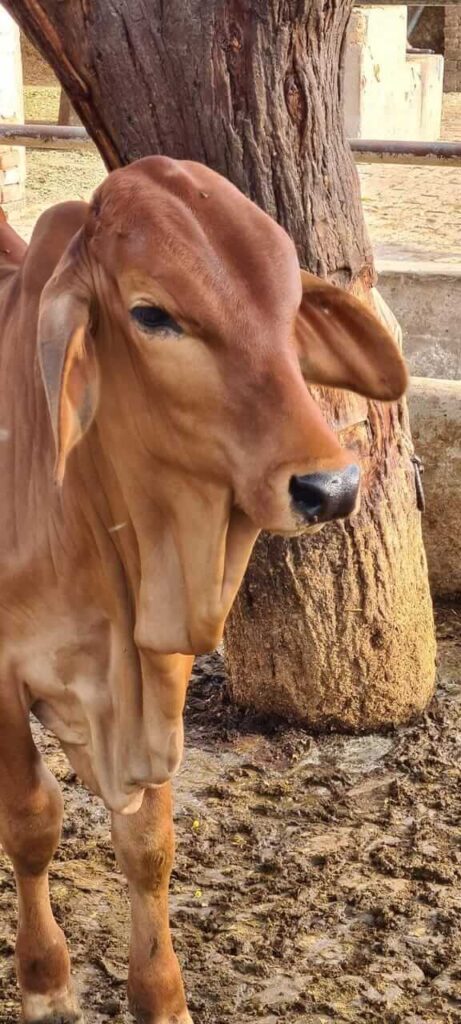
Conservation of Sahiwal Cows
With the introduction of artificial insemination in Indo-Pak there has been an emergence of cross-breeding with exotic breeds like Holstein Friesian and Jersey cattle to further increase production.
This unchecked cross-breeding has caused a sharp decline in the number of pure heads in the country of its origin. Research Centre for Conservation of Sahiwal Cattle RCCSC was established in 2003 for the conservation and improvement of Sahiwal cattle in Punjab, Pakistan.
Sahiwal cattle are being bred and maintained at the Livestock Experiment Stations owned by Govt in Punjab. Out of the LESs Jahangirabad, Khanewal, and Bahadurnagar, Okara owns the nucleus herds of Sahiwal cattle.
Currently LES Jahangirabad, Khanewal is the biggest Sahiwal cattle farm where more than 900 animals of Sahiwal breed are being reared and bred.
RCCIB also registers the herds of private farmers and breeders, cows are registered on the basis of their milk production in the category of Red Gold, Silver, and Platinum champion. The farmers of these registered cows are given the facility of deworming, vaccination, and insemination.
The male calves are also purchased by the Livestock Department for semen production. Currently Sahiwal bulls kept for semen production are present at SPU Qadirabad, Sahiwal and Karaniwala, Bahawalpur. The pedigreed bulls are selected from Govt owned farms and private breeders.
Sahiwal has good production potential for nomadic herders even in harsh climates and is an efficient digester. Some big herds of Sahiwal cattle are still present in Okara and Jhang districts being raised entirely on some gas and crop leftovers.
At present, the biggest threat to Sahiwal cattle decline is cross-breeding and inbreeding. Good Sahiwal cows are being used for cross breeding with HF to increase milk production and with brahman cattle to produce bigger-sized bulls to increase meat production.
It is now estimated that a total of 2700 heads of pure Sahiwal cattle are present in Punjab, Pakistan. The research institutions are now working to procure the embryos of cows of positive EBV value, trials are being done.
The other solution to increase the number of pure animals is the availability of sexed semen to the farmers.
As the population of A category cows is declining the number of good bulls number available is also decreasing so every farmer attempts to enhance production and choose bulls from the same line which is the cause of inbreeding and decrease in production.
The planned breeding with the information of pedigree of bulls can help to avoid inbreeding. The demand for Sahiwal cattle is increasing over the last decade, the best source to get pure cows is to buy from an auction of Govt farms and choose the bulls from Govt SPUs.

Dr. Ali Shahid is a veterinarian by profession and CEO at provets. He loves to treat animals and has great expertise in veterinary products. Our aim is to provide the best information related to your animal health.


